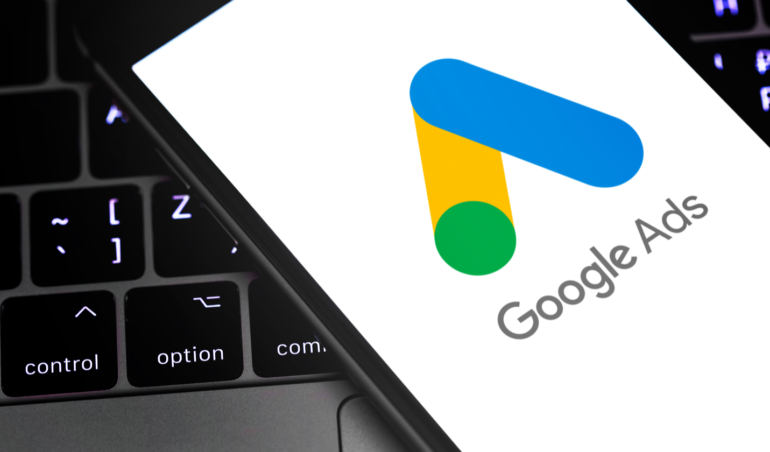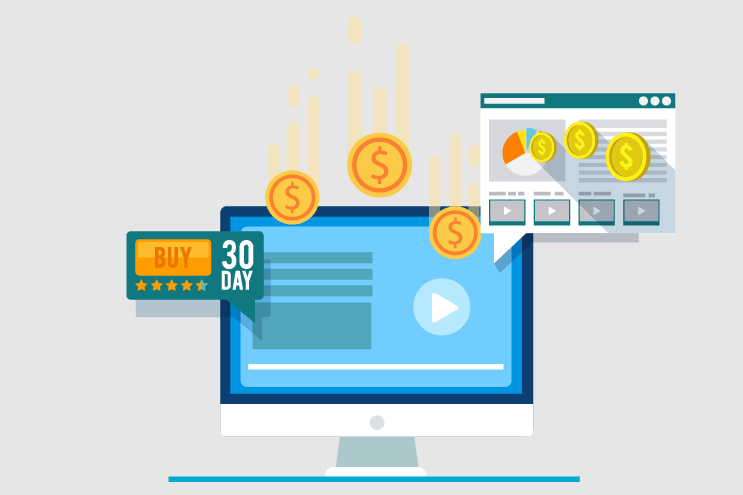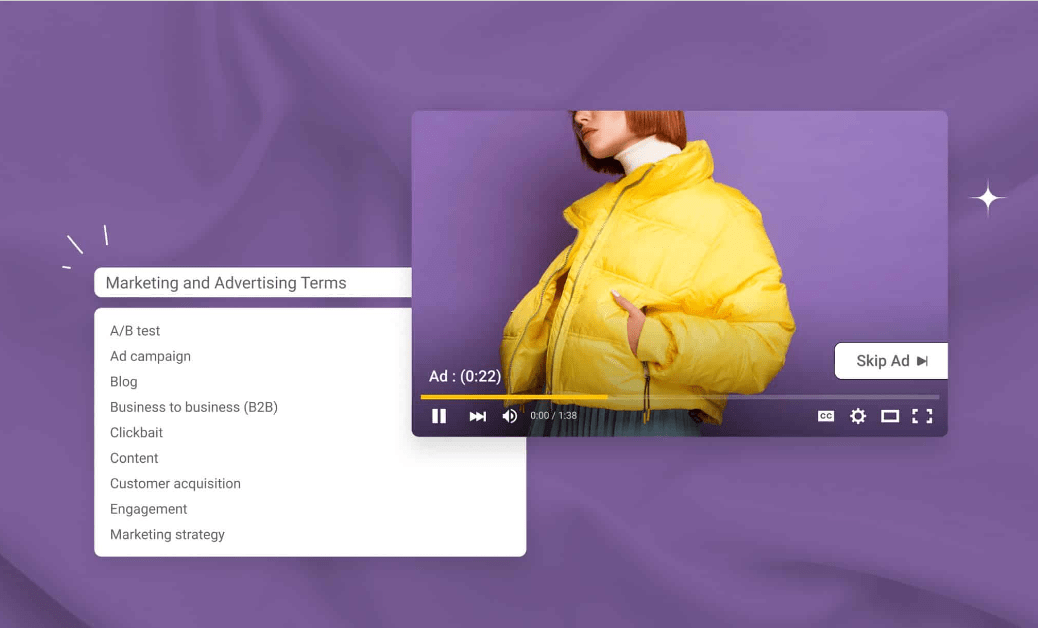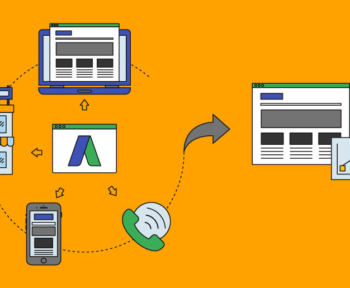Quality score, tracking, impressions, negative keyword … Is all this vocabulary unfamiliar to you? Don’t panic, paid referencing jargon has its own terms and techniques that are sometimes not easy to understand … With our glossary, learn all the words you need for paid referencing. You will therefore be at ease in developing your Google Ads campaigns.
Table of Contents
Glossary Of ‘Paid Advertising’ Terms 2022
We report in this Paid Ads glossary the main terms used when talking about paid referencing (SEA), they will be useful for the development of your advertising campaigns in 2022 and to communicate with service providers if you decide to delegate your paid campaigns.
A SEA (Search engine Advertising) campaign consists of the creation of advertising links aimed at improving the positioning of your website on the search engine results pages. Unlike natural referencing (SEO), a VAS campaign requires the use of appropriate web services. The Google Ads platform is the most used because it allows campaigns to be carried out on the Google search engine, which represents 90.6% of global traffic.
Let’s briefly recall the advantages of the PPC campaign:
- Speed: A campaign brings immediate results and generates visitors when, for example, it launches a new website.
- Accuracy: You can attract Internet users to your website based on specific criteria.
- Efficiency: the results of a VAS campaign can be measured at the closest click and thanks to the detailed reports on Google Adwords you have an overview of all the performance of your campaign.
- Flexibility: You can change the configuration of your ads in real-time.
- Control: The budget of a paid referencing campaign is fixed from the start and can be changed at any time.
A:

Ad exchange: is the contraction of Advertising Exchange which means “Advertising Exchange”. Designates an automated marketplace that allows the buying and selling of advertising space on the Internet in real-time. The Ad exchange platforms compare the offers of sites likely to display advertising banners in real-time and automatically execute the transactions. Ad exchange platforms rely on real-time bidding (RTB) techniques to automatically determine CPC (cost per click) or CPM (cost per thousand impressions). They offer the advantage of having lower brokerage costs than those of an advertising network. Generally, a distinction is made between:
Open exchange: this is the classic exchange platform where any publisher, agency, and advertiser can meet to exchange advertising impressions.
Private ad exchanges: there is only a selection of advertisers and/or publishers. The private ad exchange allows its creators to maintain greater control over the marketing of ad space. The impressions and ad placements offered are of better quality.
Examples of Ad exchange platforms: Google Ad exchange, Right Media, Orange AD Market, etc.
New call to action
Ad group: a term referring to the Google Adwords tool. Designate a folder that brings together all the characteristics of a campaign such as keywords, bids, target groups, and ads.
Ad rank: the index that determines the positioning of an ad on sponsored results and on a page of a website that presents ads.
Affiliation: marketing technique by which a commercial (or commercial) site offers a network of partner sites (affiliates) to promote its products or services through banners or advertising links. Affiliates are paid either by a commission on sales or based on the visits or leads generated by the advertisements.
Announcement: Designates the visible part of a sponsored link. It consists of a title, description, and display URL.
Advertiser: The term generally refers to the client of the advertising agency, who will invest money in sponsored links to promote their site.
C:

Campaign ads: The campaign brings together a series of ad groups (ads, keywords, and bids) that share a budget, location targeting, and other metrics. It is at the campaign level that the budget is managed, which is allocated on a daily or monthly basis.
Capping: Digital marketing technique widely used in the advertising industry, the goal of which is to limit the number of views of a visual element on the same person.
Keyword Targeting: Targeting is a keyword feature that allows you to change the sponsored link display rules. On Google Ads, targeting can be Broad (Broad match), Expression (Phrase match), or Exact.
Exact targeting: Show your ad only when the user enters the exact keyword you have chosen.
For example: choose summer pants, your ad will be displayed if the user enters ‘summer pants’.
The benefit of exact targeting is that you drive qualified traffic to your ads because double-meaning phrases and similar queries are excluded. The disadvantage of this targeting is that the traffic generated is limited and you risk losing potential interesting potentials.
Expression targeting (“phrase match”): This targeting mode allows for intermediate targeting not very different from general targeting. It allows you to display your ads on queries that include your keyword in its exact form along with other keywords.
Example: Your ad will appear on the “summer pants” template with the queries “cotton summer pants”, “white summer pants” etc.
Broad targeting: This method of targeting allows you to generate the most traffic because your ad will appear as soon as the Internet user has entered all the keywords of the fixed request. If the words are reversed, accompanied, or interspersed with other words. However, broad targeting has several drawbacks, your ad may appear on unwanted queries. It is therefore necessary to work well on the excluded keys using the “advanced query report” (available on Google Adwords).
Example: Your ad will appear on the ‘summer pants’ template with the query ‘summer linen pants.
Rank: used in Google Ads, it is the value that determines the position of an ad compared to other ads. This value also determines whether ads can be served or not. The ranking of the ad is calculated according to several criteria:
- Of the offer issued
- Quality Score components at bid time (expected click-through rate, ad relevance, landing page experience)
- The context of the Internet user’s search (geographical area, type of device used, time of the search, etc.),
- The impact of extensions and other ad formats.
Cookie: A cookie designates in the calculation a small text file saved by the browser on the computer of an Internet user. The “cookie” is widely used by advertising agencies. The use of cookies is very useful for analyzing the traffic generated by a website. The display of behavioral advertising will then be determined based on the profile of the Internet user consulting the page. To be used, these devices require the prior consent of Internet users. More information on the subject is available on the CNIL website.
CPA: stands for “Cost Per Action”, it measures the profitability of a paid referencing campaign. Its calculation is as follows: budget spent / number of actions carried out. It gives you a good insight into how an ad is performing.
CPC: stands for Cost Per Click or “cost per click”. CPC is a pricing method offered by Internet advertising agencies. It consists of paying only if a visitor clicks on the ad. The disadvantage of CPC is the high rate of fraud attempts. In fact, many are tempted to use software that automatically clicks on ads.
CTR: Click Through Rate, indicates “the click rate”. It allows you to judge the effectiveness of an advertising campaign based on the number of clicks and the number of pages viewed. It is calculated as follows: number of ad clicks/number of page views. The CTR usually varies between 0.5% and 5%.
E:

Bid: This is the amount you pay for each click made by a user on your sponsored link. There are two types of auctions:
The maximum CPC bid: This is the maximum amount you are willing to pay for a click on your ad.
The average CPC bid: This is the average price you paid per click (the result of the budget spent divided by the number of clicks).
EPC: an acronym that stands for Earning Per Click, designates the earnings generated with each click of a visitor on an online ad.
EPM: Earning Per Thousand in English, is used by advertising agencies and designates the earnings per thousand displayed by a sponsored link.
G:

Google Adsense: AdSense is Google’s advertising agency, the principle is to use websites as media for its ads. A website can choose to sign up for Google Adsense. All he has to do is collect ads and place them on his site. Google Adsense pays sites on a cost-per-click (CPC) basis.
Google Analytics: the audience analysis tool of the Google website. It is free and powerful, which makes it popular with internet users and businesses on the web.
Google Ads: created in 2000, it is the advertising agency of Google. With its online advertising program, it is possible to create advertisements that are broadcast on the web to reach Internet users. The goal of Google Ads is to write your own banners and to choose the keywords to be inserted in a very precise way. These ads appear directly in Google’s SERPs. Depending on the price you pay and the competitiveness of the targeted keyword, your ad may appear above the first organic results, at the bottom of the first page of results, or on subsequent pages.
I:
Impression: The term is used to refer to a view of your sponsored link. Impressions are one of the key indicators to track in your advertising campaign.
L:
Sponsored link: the sponsored link or commercial link is a link purchased by an advertiser that appears at the top of the search results pages following a request made by an Internet user on a search engine (Google, Bing, Yahoo). In Google, these sponsored links correspond to ads created by companies based on user searches.
Budget Line: This is an intermediate payment method offered by Google Ads for its mid-sized customers. It is up to Google to evaluate the creditworthiness of the customer based on the information provided by particular/private financial institutions. So Google Ads proposes a ‘budget line’ or a maximum amount of monthly expenses (amount for which Google gives its trust to the advertiser), which will be renewed every month.
Long tail: English term which in French corresponds to “long tail”. It is a concept of a web reference, which consists of preferring keywords that are less used by internet users in their queries, but which ultimately bring in more visitors.
M:

Keyword (keyword): In terms of SEO, a keyword is used by internet users to query search engines. The pages of the website are optimized for one or more keywords to be positioned naturally in the search engine results.
In SEA, it is a word or expression that an advertiser will purchase so that its sponsored links appear on an Internet user’s equivalent request on a search engine. The keywords you choose allow you to deliver your ads to interested Internet users and reach those who are most likely to become customers. An effective keyword list helps improve ad performance and avoid excessive costs.
Today, Google’s algorithm has evolved to favor Internet users’ search intentions to provide them with the most relevant results.
Negative (or excluded) keyword: refers to the word or words entered when setting up a paid link campaign and which help prevent the ad from appearing when the negative keyword appears in a user’s request. In Google Ads, negative keywords are preceded by a minus sign (-) in the keyword list. Negative keywords can be listed at the ad group or campaign level.
Multitargeting: sponsored link management technique that consists in buying the same keyword several times with different targets and suitable offers, in order to reduce costs.
O:
Order of insertion: means a document that is used when selling advertising space on a website. This document is sent by an advertising agency or a communication agency and indicates all the main characteristics related to the sale. It includes the following information: contact details of the two parties (the site and the agency), the period of the advertising campaign, the format of the ad, the position on the site, the pages concerned, and the price.
P:
Voice share (or impressions) is the percentage of times an ad was viewed compared to the number of times it could have been viewed. The ratio is calculated as follows:
A number of impressions that triggered an ad / Total impressions that should have triggered an ad.
Available in Google Ads performance reports, this rate is an indicator that helps advertisers find the cause of a lost impression rate.
Relevance: A metric used in Google Ads that indicates how useful the information your ads provide to users is. To determine relevance, Google Ads takes into account:
- The ad that matches the ad that might appear on a search results page.
- Keywords correspond to terms that Internet users are likely to use in their searches.
- The landing page corresponds to the web page to which the Internet user must be redirected after clicking on the ad.
Premium Position: Also called North Position, these are sponsored links that are located above natural links. With a maximum of four, they benefit from better visibility.
Placement: Sponsored link placement is the actual placement of these links on the search results page.
Q:

Quality Score: An index set by Google Ads to define the quality of an ad in paid results. The quality score of the ad is determined by an algorithm and will affect the auction price.
A:
Reports: the reports allow you to know the progress of advertising campaigns and to analyze many aspects of the SEA strategy to optimize your campaigns. On Google Ads, it is possible to carry out different types of reports from the simplest to the most advanced to obtain an in-depth analysis of your campaigns. You can access performance reports:
- Positions/Keywords
- Some announcements
- URL
- ad groups
- Campaigns
- Account
Real-Time Bidding (RTB): in French “real-time bidding”, is a system that competes for all advertisers who want to appear in sponsored search results for the keywords entered by the Internet user. This competition is based on an auction system that takes place on dedicated platforms, together with an ad quality rating system. The term ‘real time means that for each advertisement displayed, the RTB platform runs a contest, the result of which is assigned to a few tens of milliseconds, that is, ‘instantaneously’ for the Internet user.
Advertising management: advertising management can be the service of a company or a company whose main activity is the sale of advertising space on a particular medium. On the Internet, agencies generally deal with finding advertisers for publishers. Advertisers can be websites or media agencies, while publishers are websites that have ad space they want to sell.
Query: Matches the word or expression searched by an Internet user on a search engine. The result of a query is displayed on the Search Engine Result Page (SERP).
ROI: Return on investment is a financial ratio between the money invested in an investment and the money earned (or lost) as a result of this investment. Often expressed as a percentage, the ROI in marketing is fundamental, because it allows you to quantify the gain or loss of marketing activities and to know which levers to activate to increase more and which ones to avoid.
S:

SEA: Search Engine Advertising, refers to the sponsored links on the SERPs. In other words, SEA is about buying links in search engines. This method allows advertisers to appear in a good search position for a given query. On the Google search engine, ad placement is based on an auction system.
Targeting the right keywords and choosing the right rates are therefore important for achieving maximum ROI. There are two great advantages of choosing SEA over SEO:
- Gain visibility on a very popular query. Because in SEO it is difficult to get a good ranking for some popular queries.
- Quickly get good visibility for a query. It takes time to get a good rank on some SEO queries.
SEO: English acronym for Search Engine Optimization. It represents the ways to make a site as visible as possible on the SERPs without resorting to paid advertising. A visible site is a site that Internet users will easily find in the search results of search engines (Google, Bing, Yahoo). Good SEO or natural referencing, therefore, increases a site’s traffic, hence its importance.
SEO studies both how search engines work, but also how Internet users search for information. It allows you to optimize a site or web page through different techniques that take place both “on-page” (concerns the optimization of the contents visible on the web pages of a site) and “off-page” (concerns the improvement of the external network connection of the site).
SERP: Search engine results page, in French literally translates to “Search engine results page”. SERPs list all the results that are obtained by search engines (Google, Yahoo, Bing) on a particular request made by an Internet user.
Site centric: An anglo-Saxon term that designates an audience measurement technique that is carried out starting from the data recorded at the level of the website whose audience is measured. This measurement is typically performed with a specialized solution such as the Google Analytics tool that measures and analyzes the traffic of a site or web page. Site-centric measurement is different from user-centric measurement, which is the measurement of Internet panels that collect their data from users’ workstations.
Destination site: also called a landing page, designates the direct access page to a website. A landing page has the purpose of encouraging the visitor to take a certain action to lead him to reach one of the objectives defined for the site (entering an e-mail address, request for a quote, or direct sale for e-trade).
T:
Tag: HTML code to insert on the pages of your website to track the behavior of Internet users on your site (audience measurement, conversion measurement, retargeting, etc.) or to display external information such as on-page or affiliate advertising elements.
Conversion rate: it is a key indicator that measures the relationship between Internet users who have carried out an action in the context of a marketing campaign (purchase, form filling, visit, newsletter subscription, etc.) and the number of users Internet who has arrived on the landing page, is calculated as follows: a number of actions performed / number of visitors to the landing page.
Tracking: a method that consists in observing and analyzing the behavior of Internet users thanks to the tag, for commercial or marketing purposes.
Traffic: This is the number of visitors that come to your website or a specific page.
U:

Display URL: This is the Uniform Resource Locator (URL) displayed in the ad, usually in green characters. The display URL gives users an idea of which page they will be directed to if they click on an ad.
Destination URL: This is the URL the user is redirected to after clicking on the sponsored link. The destination URL doesn’t appear in your ads (but the display URL does). It typically contains all the parameters needed for sponsored link tracking.
Our SEA Paid Search Glossary 2022 ends here. You now have all the terms to understand the technical jargon used in this part of digital marketing.





